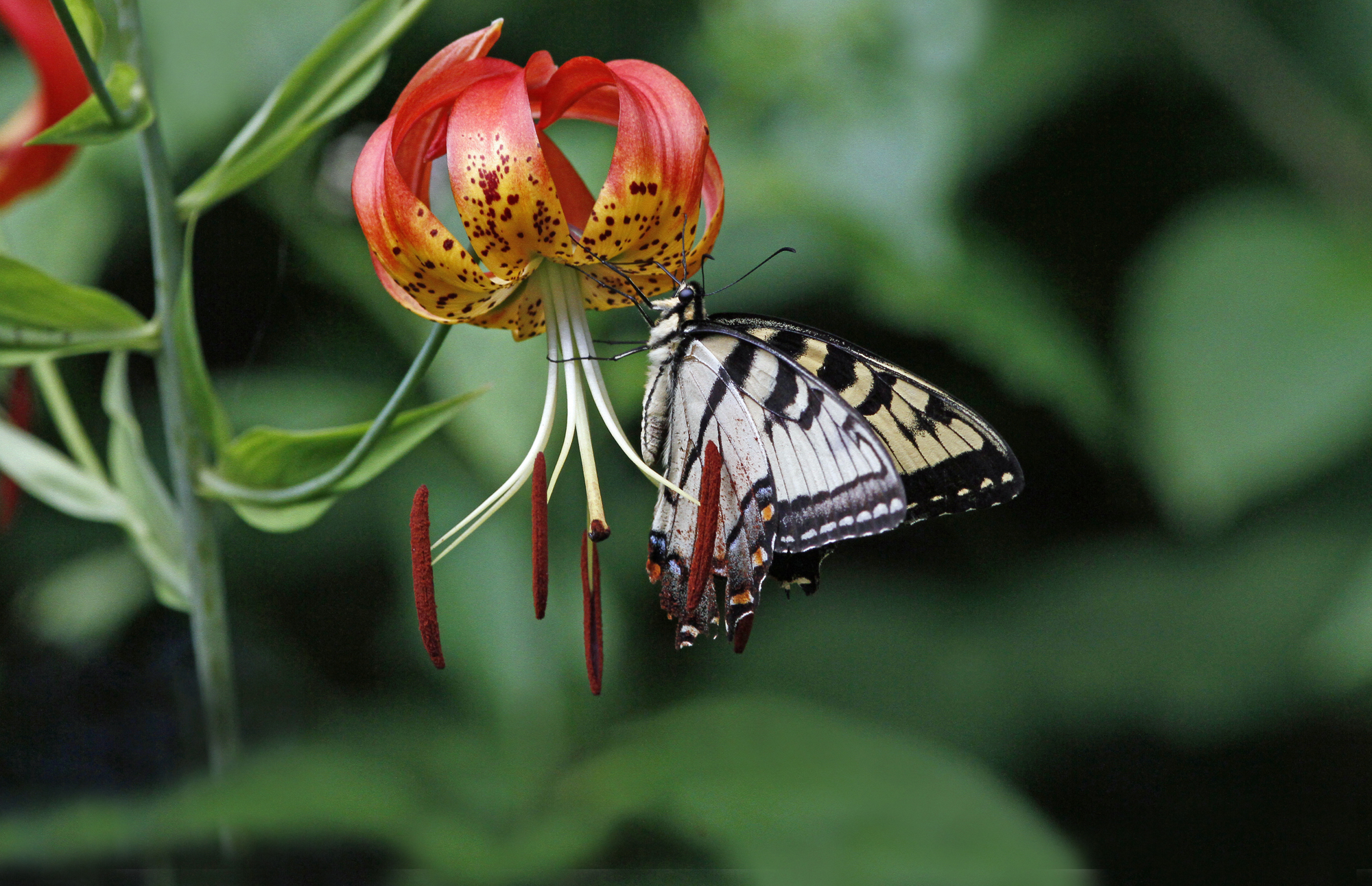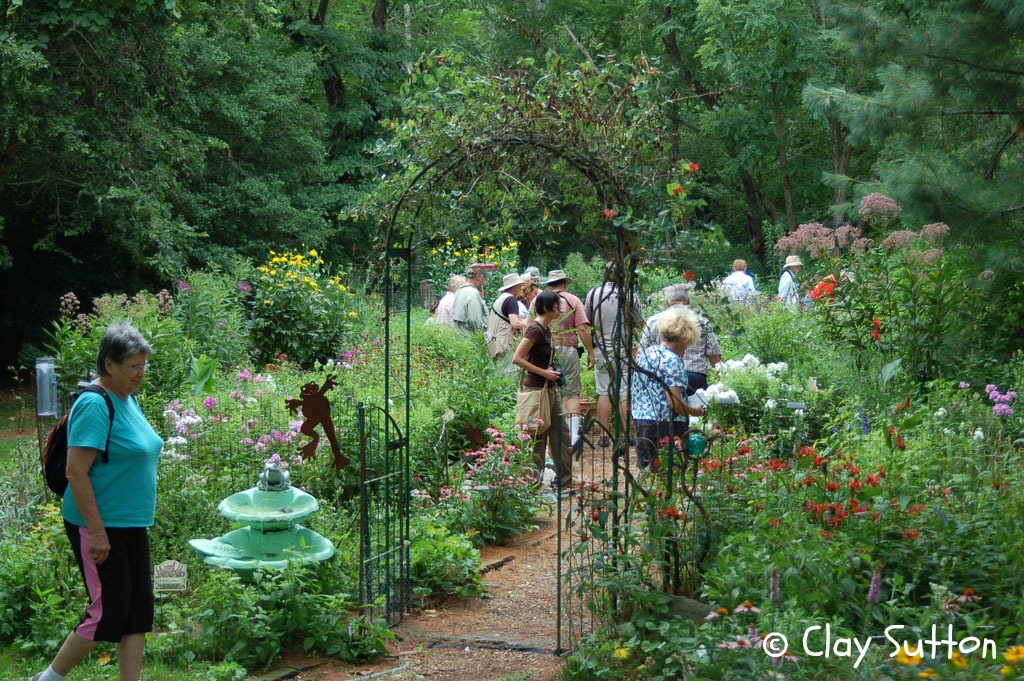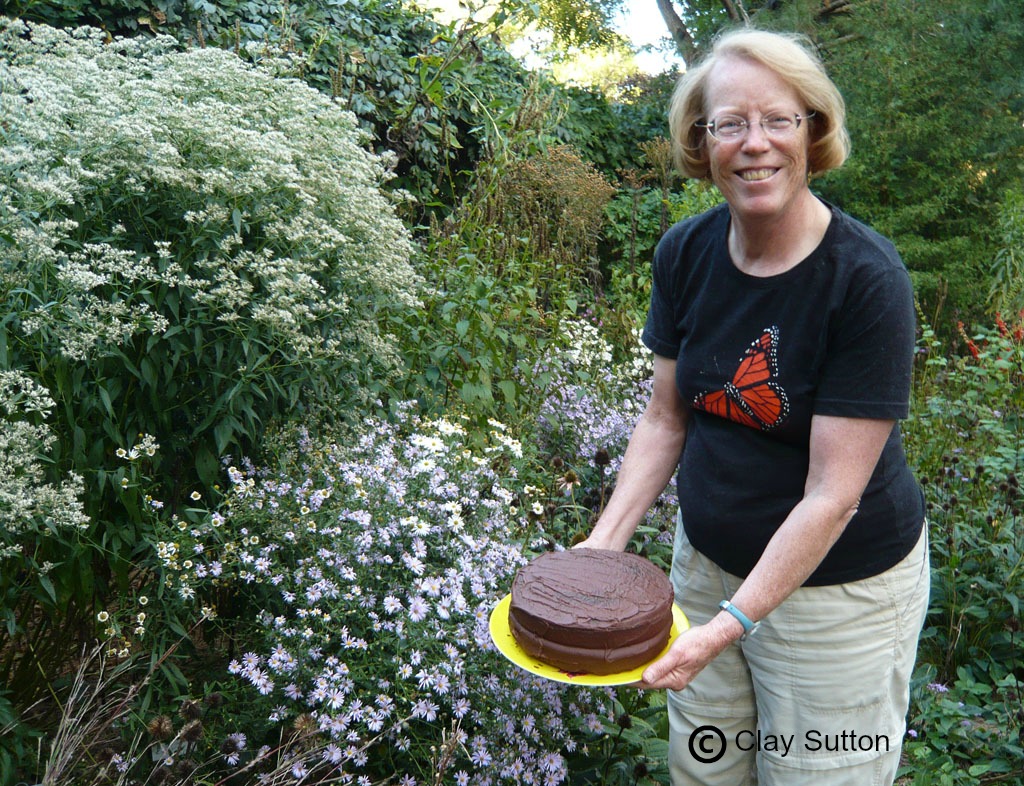Hi Gang,
I enjoyed sharing my program “Backyard Birds Attracted to a Wildlife Habitat” for Jenkins Arboretum via ZOOM (so it was available to all, near & far) on February 20, 2025! And it was FREE! And I gave permission for Jenkins Arboretum to record it. I’ll share full details further down in this post, but first let me gush a bit about Jenkins Arboretum and how excited I was to present a program for them.
Some of my favorite natives in our itty-bitty restored woodlands (1/3rd of our 1/2 acre property) came from Jenkins Arboretum, propagated on-site by staff and terrific volunteers from natives in their own landscape and sold in their Garden Shop.
My heart sings when Pinxterbloom Azalea, Rhododendron periclymenoides, blooms, a South Jersey native, but one that I could not find available for sale at any of the South Jersey native plant nurseries I knew of in 2009 (when we saved our woods from Multiflora Rose and Japanese Honeysuckle). So I am forever grateful to Jenkins Arboretum for this shrub.
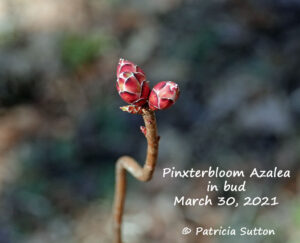 For the first eleven years my Pinxterbloom Azalea did not bloom and, quite frankly, I forgot I’d even planted it. But then on March 30, 2021, a shrub I didn’t recognize with large, showy buds caught my eye. I stopped in my tracks, thinking “What the heck!” I found my plant sign near its base and recalled my purchase. I kept an eye on it. On
For the first eleven years my Pinxterbloom Azalea did not bloom and, quite frankly, I forgot I’d even planted it. But then on March 30, 2021, a shrub I didn’t recognize with large, showy buds caught my eye. I stopped in my tracks, thinking “What the heck!” I found my plant sign near its base and recalled my purchase. I kept an eye on it. On 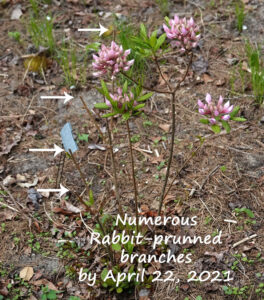 April 22nd the buds were getting close to blooming, but one-by-one the stems (and buds) were disappearing (cleanly sliced off). I quickly realized why I’d lost track of this shrub. Our abundant rabbits, who must think we’ve planted everything for them, had been repeatedly pruning this shrub of its buds (resulting in no flowers of course). That day I gathered reinforcements and circled my brutalized azalea with chicken wire (1.5′ high). April 29th flowers finally bloomed on my Pinxterbloom Azalea. Now, each spring, I eagerly
April 22nd the buds were getting close to blooming, but one-by-one the stems (and buds) were disappearing (cleanly sliced off). I quickly realized why I’d lost track of this shrub. Our abundant rabbits, who must think we’ve planted everything for them, had been repeatedly pruning this shrub of its buds (resulting in no flowers of course). That day I gathered reinforcements and circled my brutalized azalea with chicken wire (1.5′ high). April 29th flowers finally bloomed on my Pinxterbloom Azalea. Now, each spring, I eagerly 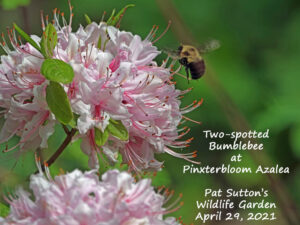 and with child-like wonder look forward to these big, showy pink blooms, always busy with pollinators, and now occurring on multiple branches safely within my ugly chicken wire protection.
and with child-like wonder look forward to these big, showy pink blooms, always busy with pollinators, and now occurring on multiple branches safely within my ugly chicken wire protection.
So, when Jenkins Arboretum invited me to present a program for their Third Thursday Lecture Series, I eagerly agreed. And I gave Jenkins Arboretum & Gardens permission to record this program and add it to their You Tube Channel as an educational video. Details follow:
“Backyard Birds Attracted to a Wildlife Habitat,”
by Pat Sutton
was presented on February 20, 2025
Via ZOOM for Jenkins Arboretum and Gardens
as part of their “Third Thursday Lecture Series.”
Click HERE to see a recording of the program
and Jenkins Arboretum & Gardens’ links to additional great information
Click HERE for Pat Sutton’s Backyard Birds HANDOUT
This handout should answer questions you may have after viewing this program; it shares some of my favorite books, resources, tools, protection measures, etc. that I include in the program.
ABOUT THE PROGRAM: Create it and they will come! Pat Sutton will share accounts of the diverse wildlife attracted to the South Jersey wildscape she and her husband have nurtured for over 45 years. They have tallied over 213 bird species, 79 butterfly species, and 116 other pollinators (37 different wasps, 34 different flies, 26 different bees, 10 different beetles, and 10 different diurnal moths) in their tiny one-half-acre wildlife oasis. How’d they do it? By questioning each practice as to whether it would help or harm wildlife. Get tips on creating a backyard habitat that benefits wildlife.
ABOUT JENKINS ARBORETUM: I’ve included Jenkins Arboretum’s offerings in my “Some Sources of Native Plants” for a number of years. If you live near there and haven’t visited yet, by all means do. And if it means a road trip, I promise you that it will be worth your while. Jenkins Arboretum & Gardens, 631 Berwyn Baptist Road, Devon, PA 19333 (Chester Co.); 610-647-8870. Garden Shop (open daily: 9 am – 4 pm) sells a wonderful selection of native seeds year round and, from mid-April until late October, also sells a great selection of native perennials, shrubs, trees, and evergreen & deciduous azaleas (most all are propagated on-site at Jenkins). Check their website for their regularly updated “Plant Inventory List.” See native plants in the landscape by visiting this 48-acre arboretum and gardens with 7 different trails (each about 1/4 mile or less). Garden map & trail descriptions can be found HERE. Open daily year round (hours vary seasonally, depending on when the sun sets): March 15 – April 30 (9 am – 7 pm), May 1 – August 31 (9 am – 8 pm), September 1 – 30 (9 am – 7 pm), and October 1 – March 14 (9 am – 5 pm). FREE admission, donations recommended.
Happy Wildlife Gardening,
Pat
